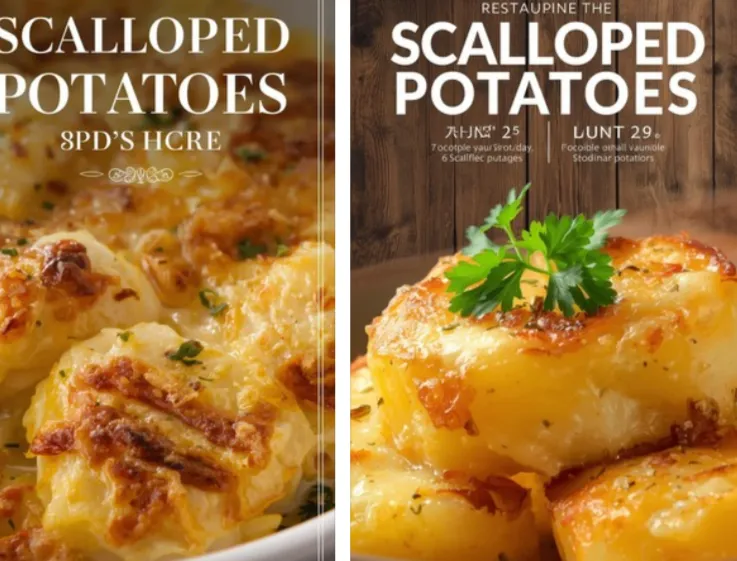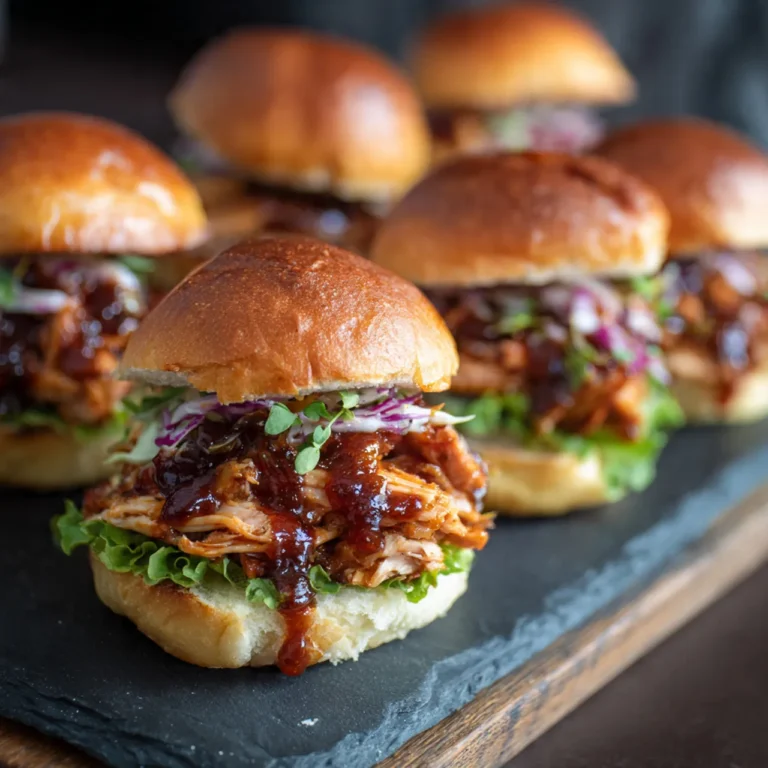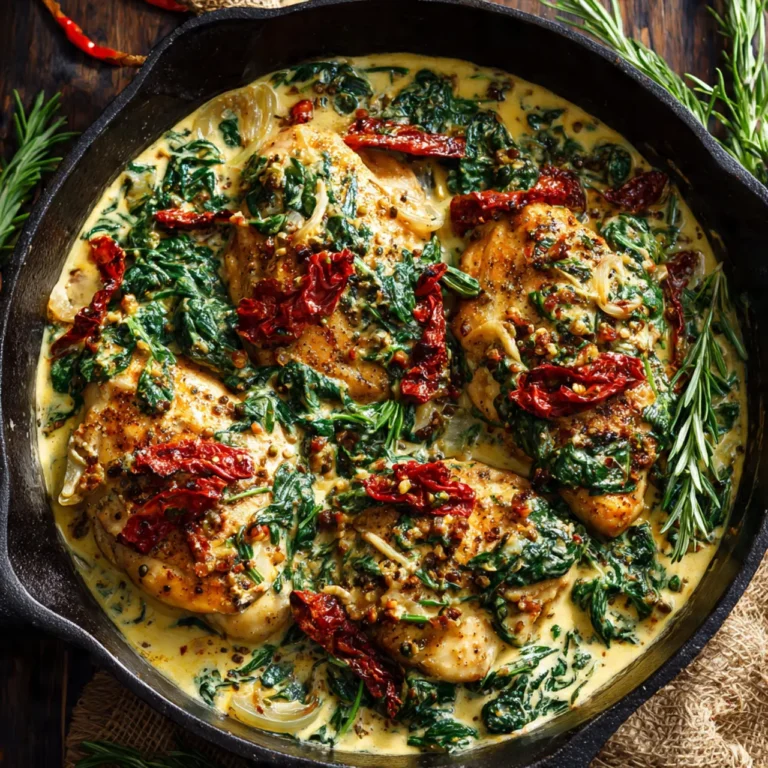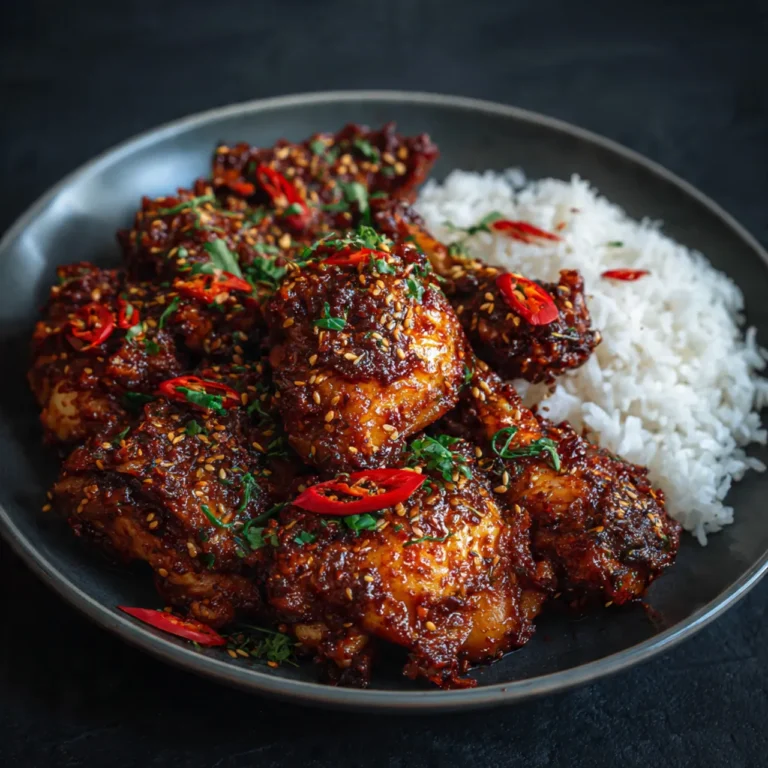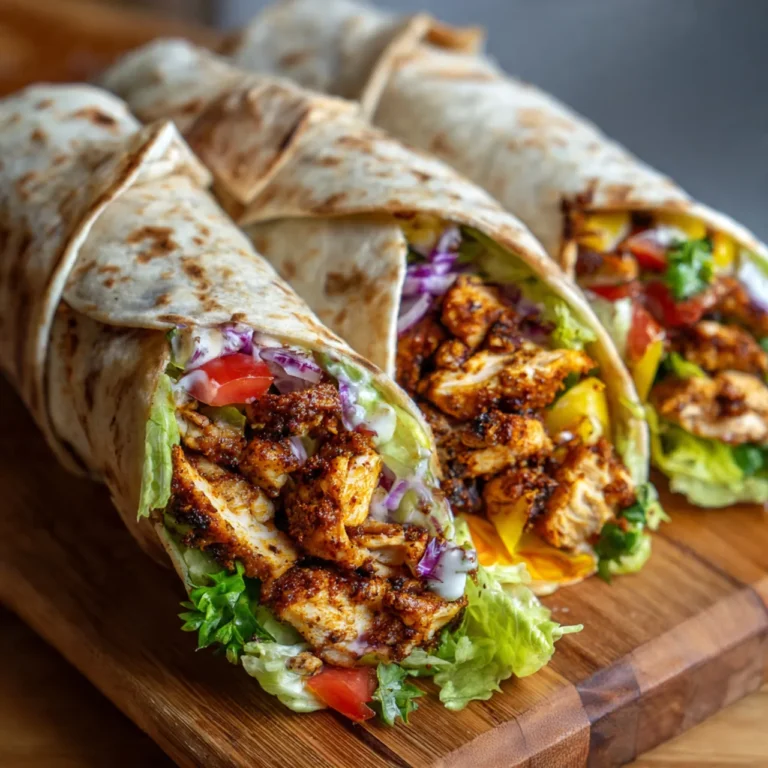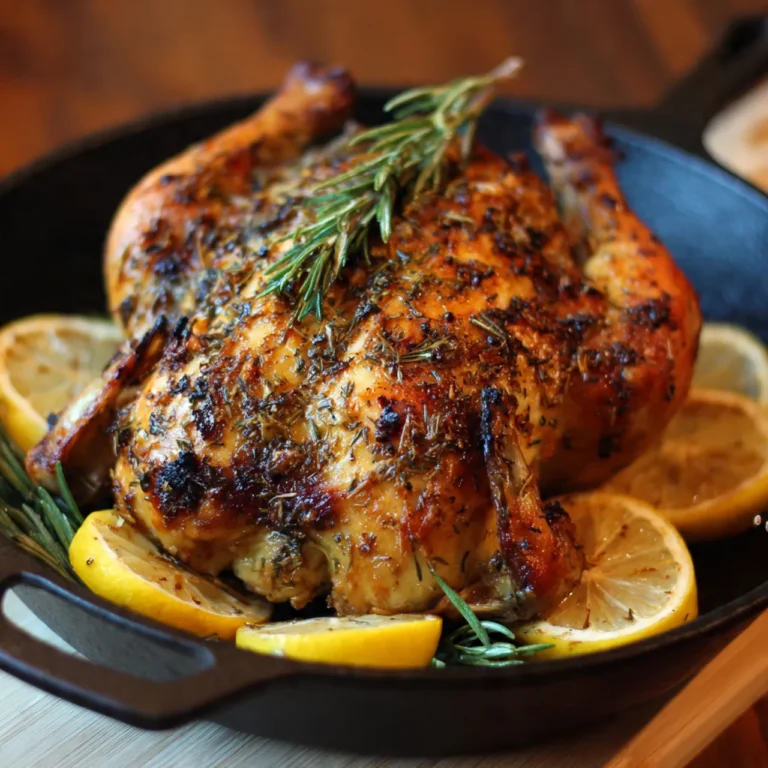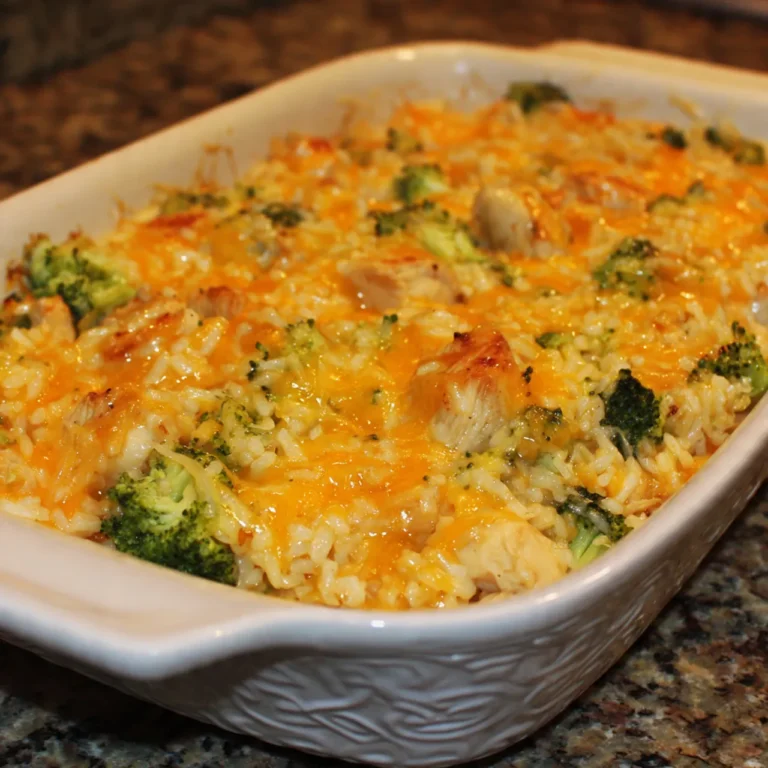Scalloped potatoes are the epitome of comfort food—a creamy, tender, and golden-baked casserole that brings warmth and nostalgia to any table. With their delicate layers of thinly sliced potatoes bathed in a rich, velvety sauce, scalloped potatoes are a beloved side dish for holidays, Sunday dinners, and celebratory gatherings. Their appeal lies in the harmonious blend of simple ingredients: potatoes, cream, butter, and sometimes cheese, all baked to perfection. Whether served alongside roast meats, poultry, or as a vegetarian centerpiece, scalloped potatoes are a dish that never fails to impress. This comprehensive guide explores the history of scalloped potatoes, the science behind their creamy texture, essential ingredients, step-by-step instructions, expert tips, creative variations, serving suggestions, presentation ideas, nutritional insights, and answers to common questions. By the end, you’ll have all the knowledge and inspiration needed to master this classic side and make it your own.
The History and Tradition of Scalloped Potatoes
The origins of scalloped potatoes can be traced back to European cuisine, where potatoes have long been a staple. The term “scalloped” refers to the method of layering thinly sliced potatoes in a dish and baking them with cream or milk. In France, a similar dish known as “gratin dauphinois” is made with potatoes, cream, and sometimes cheese. In the United States, scalloped potatoes became popular in the 19th and 20th centuries, often appearing in community cookbooks and family recipe collections. The dish’s enduring popularity is due to its comforting flavors, versatility, and ability to feed a crowd. Today, scalloped potatoes are a fixture at holiday meals like Easter, Thanksgiving, and Christmas, as well as a favorite for potlucks and family gatherings.
Why Scalloped Potatoes?
Scalloped potatoes are more than just a side dish; they are a celebration of texture, flavor, and tradition. The combination of tender potatoes, creamy sauce, and a golden, slightly crisp top creates a dish that is both comforting and elegant. Scalloped potatoes are easy to prepare in advance, can be customized with a variety of add-ins, and pair beautifully with a wide range of main courses. Whether you prefer them classic and simple or loaded with cheese and herbs, scalloped potatoes are sure to please a crowd and evoke fond memories of home-cooked meals.
The Science of Creamy Scalloped Potatoes
The key to perfect scalloped potatoes lies in the choice of potato, the thickness of the slices, and the composition of the sauce. Starchy potatoes like Russets or Yukon Golds yield the creamiest results, as their high starch content helps thicken the sauce and create a tender texture. Slicing the potatoes thinly and evenly (about 1/8 inch thick) ensures even cooking and allows the sauce to permeate each layer. The sauce, typically made from cream, milk, butter, and sometimes flour, coats the potatoes and bakes into a luscious, velvety consistency. Cheese is a popular addition, adding richness and flavor, but is not strictly necessary for classic scalloped potatoes. Baking the casserole uncovered allows the top to brown and form a delicious crust, while the interior remains soft and creamy.
Selecting the Best Ingredients
- Potatoes: Russet (Idaho) potatoes are the classic choice for their high starch content and fluffy texture. Yukon Golds offer a naturally buttery flavor and hold their shape well. Waxy potatoes like red or white varieties can be used for a firmer texture.
- Cream and Milk: Heavy cream, half-and-half, or whole milk provide richness and a silky mouthfeel. A combination of cream and milk yields the best balance of flavor and texture.
- Butter: Adds richness and helps create a smooth sauce.
- Flour: Used in some recipes to thicken the sauce and prevent curdling.
- Cheese: Optional, but sharp cheddar, Gruyère, or Parmesan add depth and a golden crust.
- Onion and Garlic: Sautéed or raw, these aromatics add subtle sweetness and complexity.
- Salt and Pepper: Essential for seasoning the potatoes and sauce.
- Herbs: Fresh thyme, rosemary, chives, or parsley for added flavor and color.
- Nutmeg: A pinch of freshly grated nutmeg enhances the creaminess.
Step-by-Step Recipe: Classic Scalloped Potatoes
Ingredients
- 3 pounds Russet or Yukon Gold potatoes, peeled and sliced 1/8 inch thick
- 2 cups heavy cream
- 1 cup whole milk
- 4 tablespoons unsalted butter
- 1 medium onion, finely chopped
- 2 cloves garlic, minced
- 1/4 cup all-purpose flour (optional, for thicker sauce)
- 1 1/2 teaspoons kosher salt
- 1/2 teaspoon freshly ground black pepper
- 1/4 teaspoon freshly grated nutmeg (optional)
- 1 cup grated Gruyère, cheddar, or Parmesan cheese (optional)
- 2 tablespoons chopped fresh thyme or chives (optional)
- Butter for greasing the baking dish
Instructions
- Prepare the Potatoes: Peel the potatoes and slice them evenly to 1/8 inch thickness using a mandoline or sharp knife. Place the slices in a bowl of cold water to prevent browning and remove excess starch. Drain and pat dry before assembling.
- Make the Sauce: In a medium saucepan, melt the butter over medium heat. Add the onion and cook until soft and translucent, about 5 minutes. Add the garlic and cook for 1 minute more. If using flour, sprinkle it over the onions and cook, stirring, for 1-2 minutes to form a roux. Gradually whisk in the cream and milk, stirring constantly to prevent lumps. Bring to a gentle simmer and cook until slightly thickened, about 3-5 minutes. Stir in salt, pepper, and nutmeg. Remove from heat and stir in half the cheese, if using.
- Assemble the Casserole: Preheat the oven to 375°F (190°C). Grease a 9×13-inch baking dish with butter. Arrange half the potato slices in an even layer in the dish. Pour half the sauce over the potatoes, spreading evenly. Sprinkle with half the remaining cheese and half the herbs, if using. Repeat with the remaining potatoes, sauce, cheese, and herbs.
- Bake: Cover the dish with foil and bake for 40 minutes. Remove the foil and bake for an additional 25-35 minutes, until the potatoes are tender and the top is golden brown and bubbling. Let the casserole rest for 15 minutes before serving to allow the sauce to set.
Variations and Creative Adaptations
Cheesy Scalloped Potatoes
Add 2 cups shredded sharp cheddar, Gruyère, or a blend of cheeses to the sauce and between the layers for a rich, cheesy casserole.
Scalloped Potatoes with Ham
Layer 2 cups diced cooked ham between the potatoes for a hearty main dish.
Scalloped Potatoes with Bacon
Sprinkle cooked, crumbled bacon between the layers and on top for smoky flavor.
Garlic Herb Scalloped Potatoes
Add extra garlic and a mix of fresh herbs like thyme, rosemary, and chives for an aromatic twist.
Vegan Scalloped Potatoes
Use plant-based butter, unsweetened non-dairy milk, and vegan cheese or nutritional yeast for a dairy-free version.
Gluten-Free Scalloped Potatoes
Use gluten-free flour or cornstarch to thicken the sauce.
Scalloped Sweet Potatoes
Substitute all or part of the potatoes with sweet potatoes for a colorful, slightly sweet variation.
Scalloped Potatoes with Leeks
Replace the onion with thinly sliced leeks for a milder, sweeter flavor.
Spicy Scalloped Potatoes
Add a pinch of cayenne pepper or sliced jalapeños for heat.
Tips for the Perfect Scalloped Potatoes
- Slice potatoes evenly for uniform cooking.
- Use starchy potatoes for the creamiest texture.
- Rinse and dry potato slices to remove excess starch and prevent sticking.
- Warm the cream and milk before adding to the potatoes for even cooking.
- Cover with foil for the first part of baking to steam the potatoes, then uncover to brown the top.
- Let the casserole rest before serving for easier slicing and a set sauce.
- Taste and adjust seasoning before baking.
Serving Suggestions
Scalloped potatoes are the perfect companion to roast beef, ham, chicken, turkey, or pork. They also pair beautifully with vegetarian mains like mushroom Wellington, lentil loaf, or roasted vegetables. Serve them alongside green beans, glazed carrots, or a crisp salad for a balanced meal. For a buffet or potluck, keep the casserole warm in a slow cooker or covered dish.
Presentation Ideas
Serve scalloped potatoes in a beautiful ceramic or cast-iron baking dish for a rustic look. Garnish with fresh herbs, extra cheese, or a sprinkle of paprika for color. For individual servings, bake in ramekins or mini cocottes. For a festive touch, use a mandoline to create decorative potato patterns on top.
The Science Behind Scalloped Potatoes
The creamy texture of scalloped potatoes comes from the breakdown of starches during baking and the incorporation of fat and liquid. The sauce thickens as it bakes, coating each slice of potato. Cheese adds both flavor and a golden crust. The Maillard reaction during baking enhances the flavor and color of the top layer. Letting the casserole rest allows the sauce to set and makes serving easier.
Scalloped Potatoes Around the World
While scalloped potatoes are a classic in American and British cuisine, similar dishes exist worldwide.
1/In France, gratin dauphinois is made with cream and sometimes cheese.
In Sweden, “Janssons frestelse” combines potatoes, onions, and anchovies.
In Italy, “patate al forno” are baked with olive oil and herbs. Each culture adapts the basic concept to local ingredients and tastes, making scalloped potatoes a dish as diverse as the world itself.
Health Considerations
Scalloped potatoes are a comfort food, best enjoyed in moderation. For a lighter version, use less cream and cheese, or substitute with milk or plant-based alternatives. For added nutrition, leave the skins on for extra fiber, or mix in root vegetables like parsnips or carrots. The dish is naturally gluten-free if made without flour or with gluten-free thickener.
Frequently Asked Questions
Can I make scalloped potatoes ahead of time?
Yes, assemble the casserole up to a day in advance. Refrigerate, then bake before serving. If baking from cold, add 10-15 minutes to the baking time.
Can I freeze scalloped potatoes?
Yes, freeze the baked casserole for up to two months. Thaw overnight and reheat in the oven.
Why are my scalloped potatoes watery?
Too much liquid or not enough thickener can cause a watery casserole. Use starchy potatoes and let the dish rest before serving.
Can I use pre-sliced potatoes?
Yes, but fresh-sliced potatoes yield the best texture and flavor.
How do I keep the top from burning?
Cover with foil for the first part of baking, then uncover to brown the top.
Hosting with Scalloped Potatoes
Scalloped potatoes are a crowd-pleaser and can be doubled or tripled for large gatherings. Prepare in advance and bake just before serving for stress-free entertaining. Offer a potato bar with toppings like cheese, bacon, chives, and sour cream for a fun, interactive meal.
Creative Twists
- Add caramelized onions or roasted garlic for depth.
- Mix in sautéed mushrooms or spinach for extra flavor.
- Top with breadcrumbs or crushed crackers for crunch.
- Swirl in pesto or sun-dried tomato paste for Mediterranean flair.
- Use blue cheese or smoked Gouda for a bold twist.
Scalloped Potatoes Recipe (Summary)
Ingredients:
3 lbs potatoes, 2 cups cream, 1 cup milk, 4 tbsp butter, 1 onion, 2 garlic cloves, 1/4 cup flour, 1.5 tsp salt, 1/2 tsp pepper, 1/4 tsp nutmeg, 1 cup cheese, herbs.
Instructions:
Slice potatoes. Make sauce with butter, onion, garlic, flour, cream, milk, cheese, and seasonings. Layer potatoes and sauce in dish. Bake covered at 375°F for 40 min, uncover and bake 25-35 min more.
Final Thoughts
Scalloped potatoes are a timeless dish that brings warmth, flavor, and comfort to any table. With their simple ingredients and endless adaptability, they invite creativity and personal touches. Whether you stick to the classic or explore new variations, scalloped potatoes are sure to become a cherished part of your holiday celebrations and family meals. Experiment with different cheeses, herbs, and add-ins to make them your own. With the tips, recipe, and ideas shared in this post, creating the perfect scalloped potatoes is within reach for cooks of all skill levels. Celebrate the season and the joy of gathering with this beloved side dish.
Additional Tips for Success
- Always taste and adjust seasoning before baking.
- For a creamier texture, use a mandoline for even slices.
- Let the casserole rest before serving for best texture.
- Store leftovers in an airtight container and reheat gently.
Nutritional Information (Approximate per serving)
- Calories: 220-340
- Protein: 5-8g
- Fat: 10-18g
- Carbohydrates: 28-36g
- Fiber: 2-4g
- Sodium: 350-550mg
Conclusion
Scalloped potatoes are a versatile, crowd-pleasing side that brings together the best of comfort and flavor in a creamy, golden, and satisfying format. With their simple preparation, stunning presentation, and endless possibilities for customization, they are a must-have for any holiday feast or family meal. Try different variations, experiment with flavors, and make this classic side your own.
